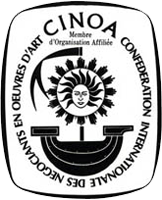Edwardian Novelty Silver Great Auk Pepper
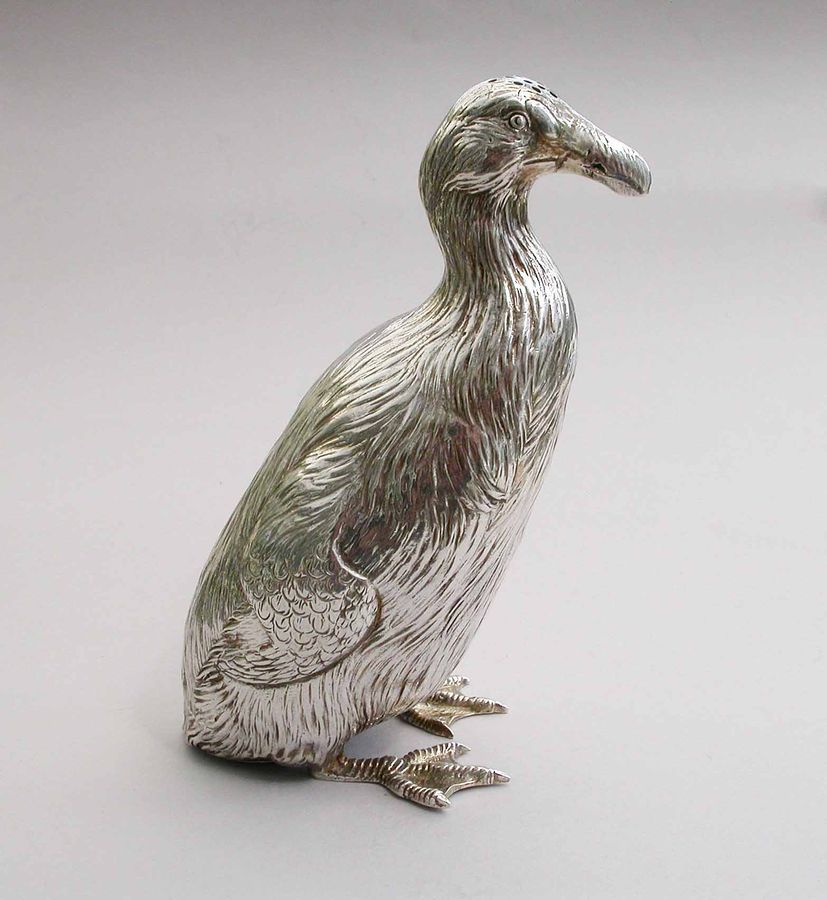
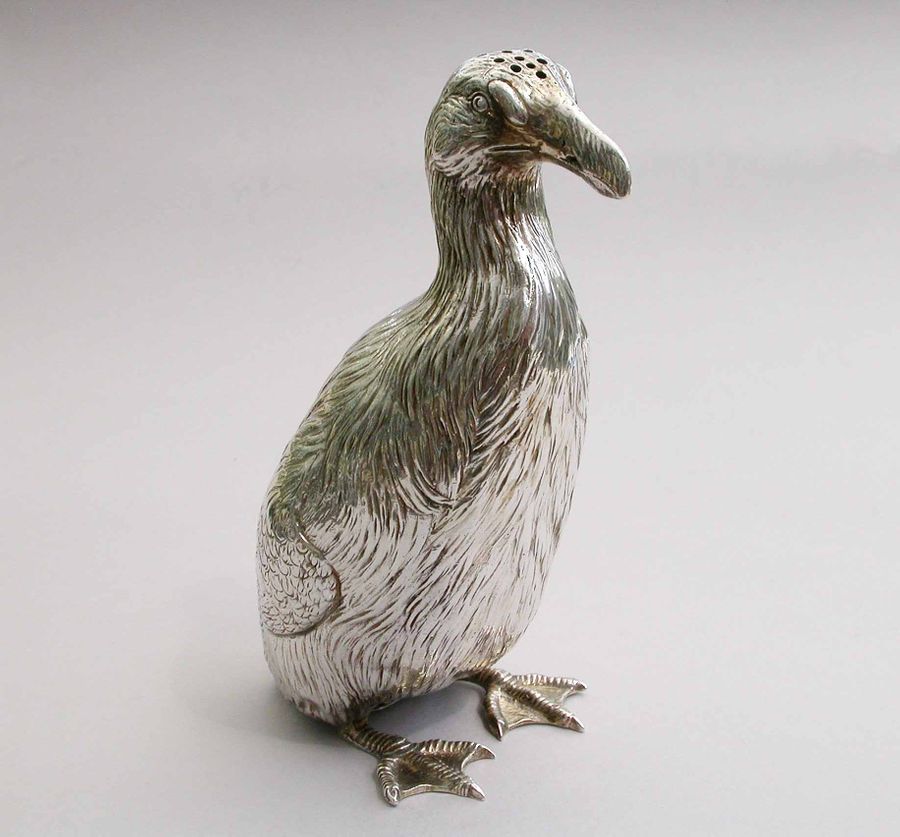
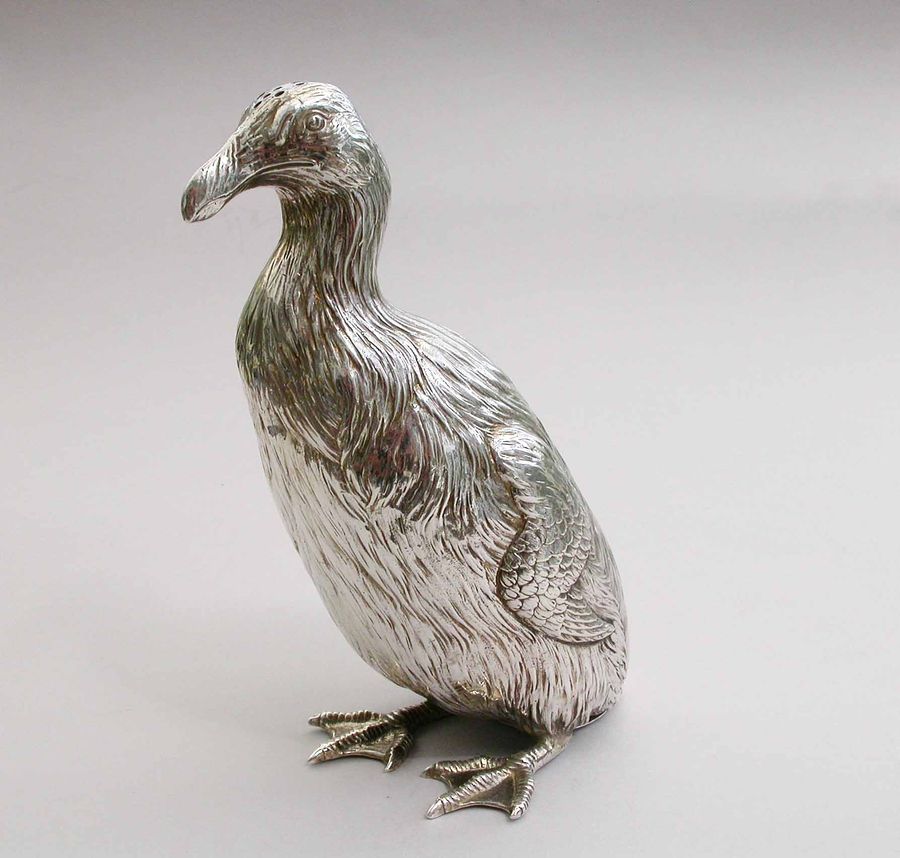
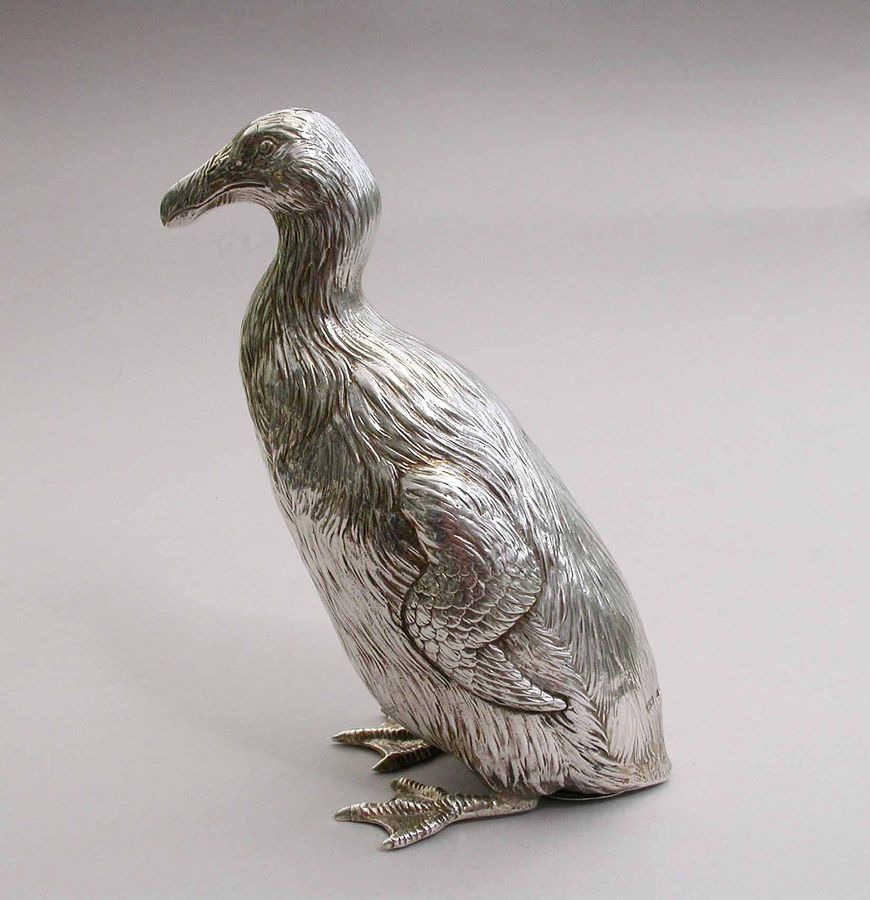
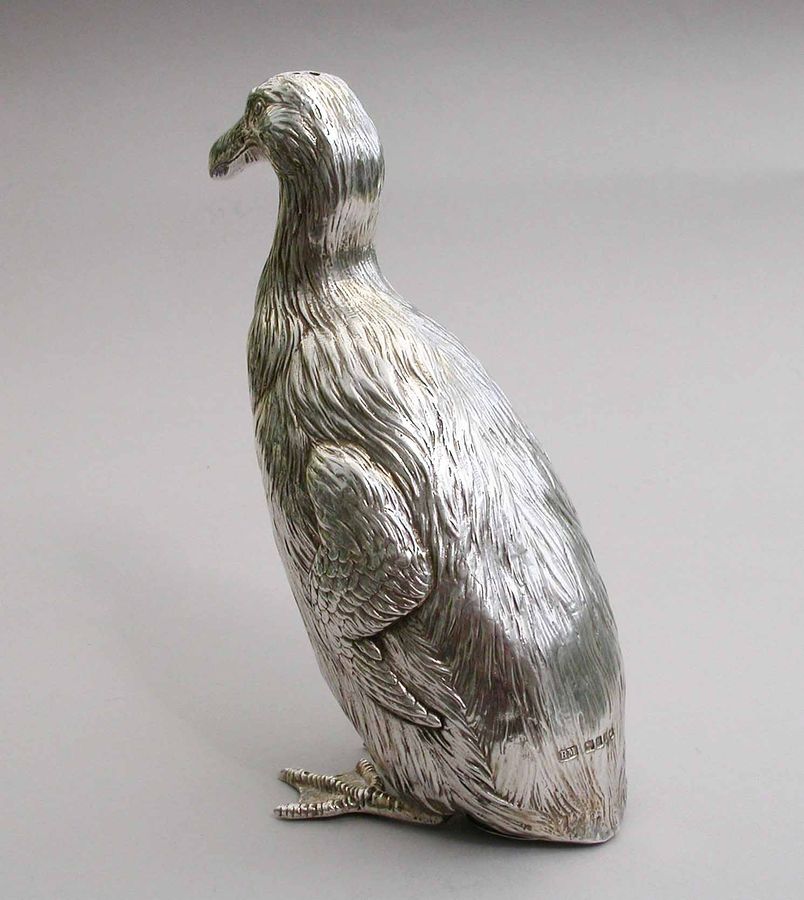
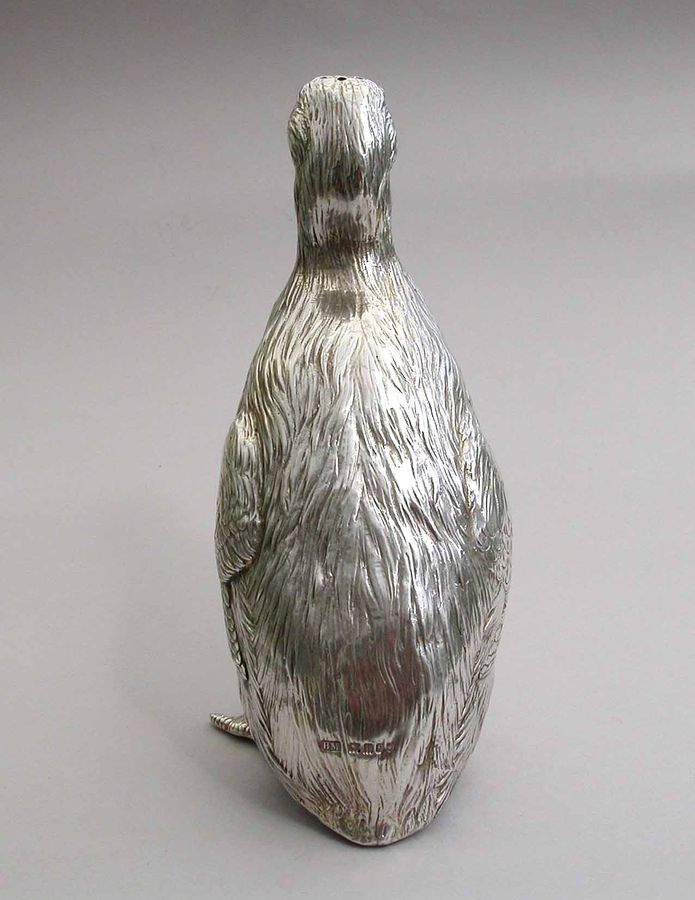
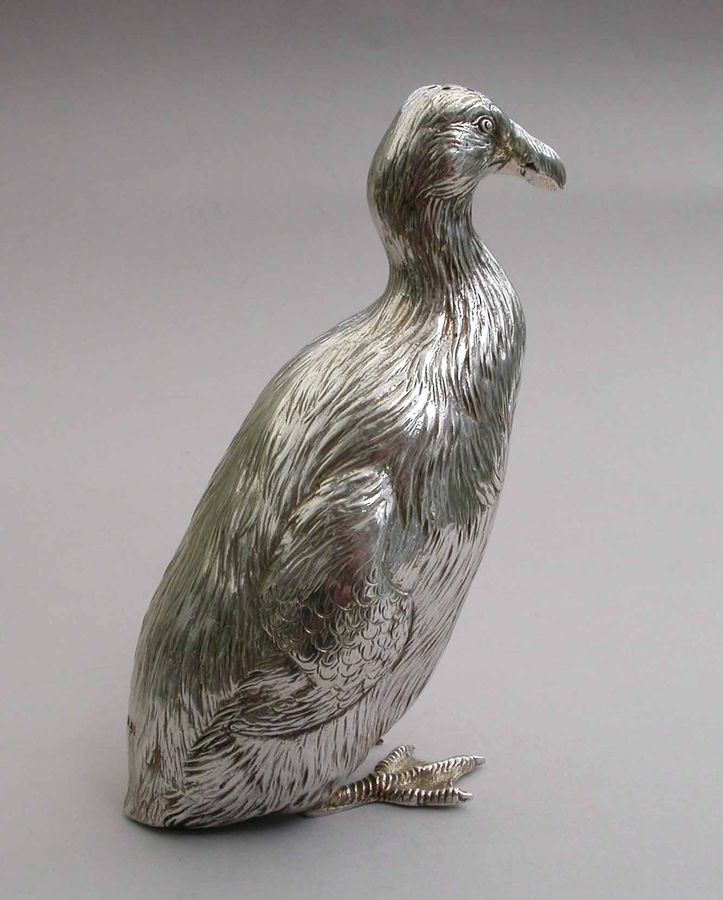
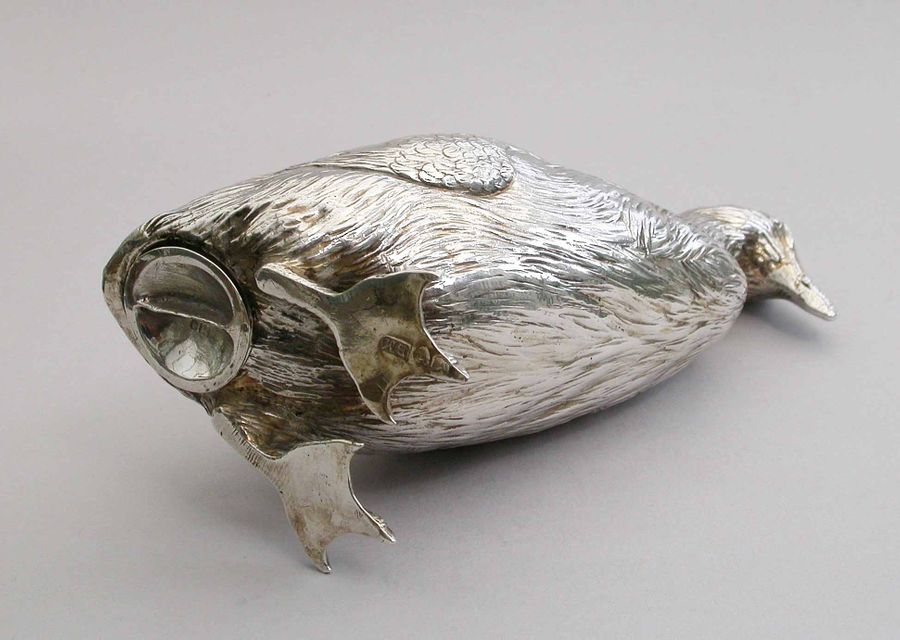
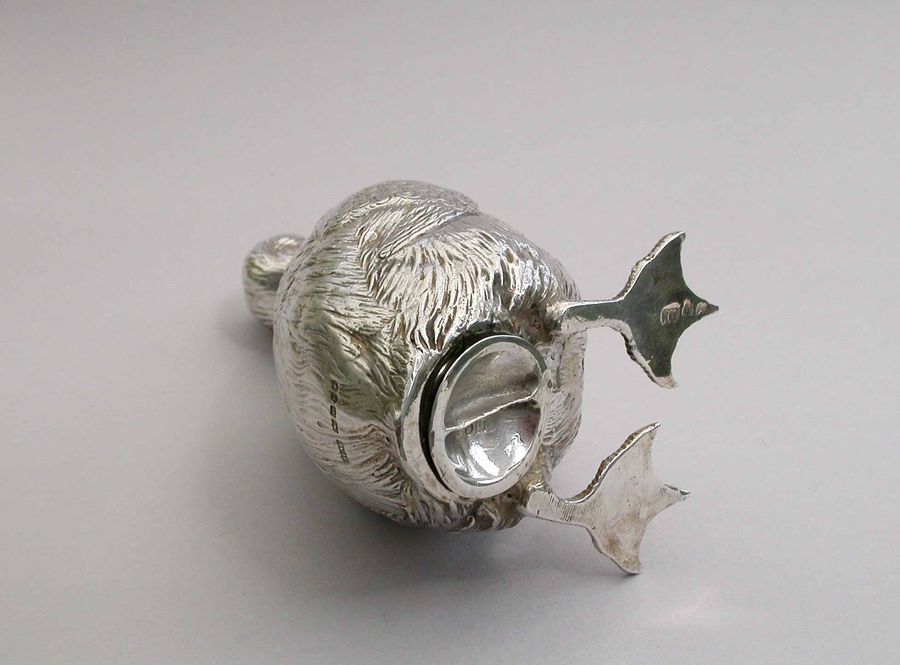
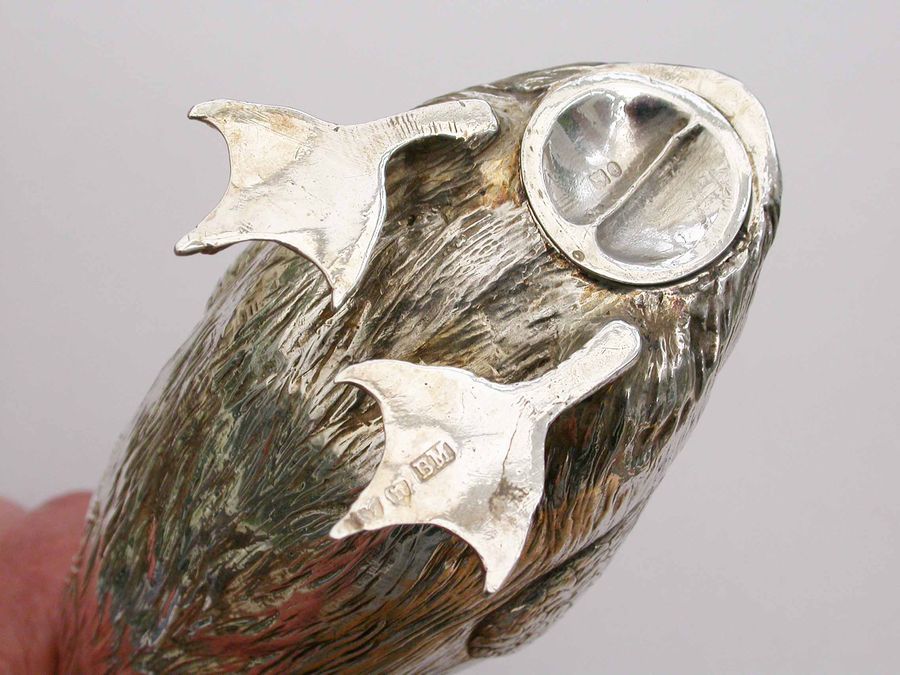
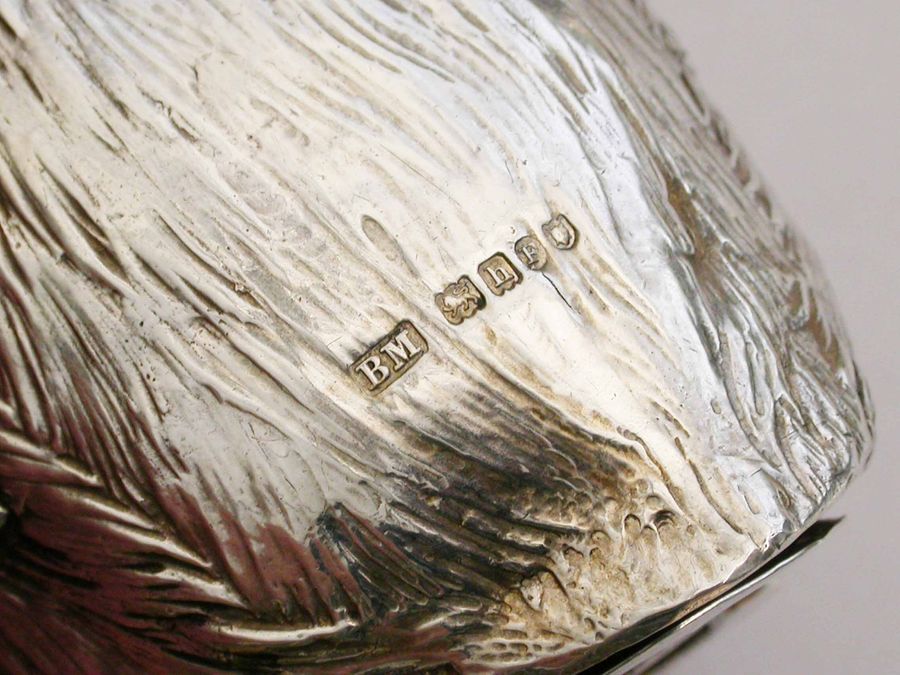
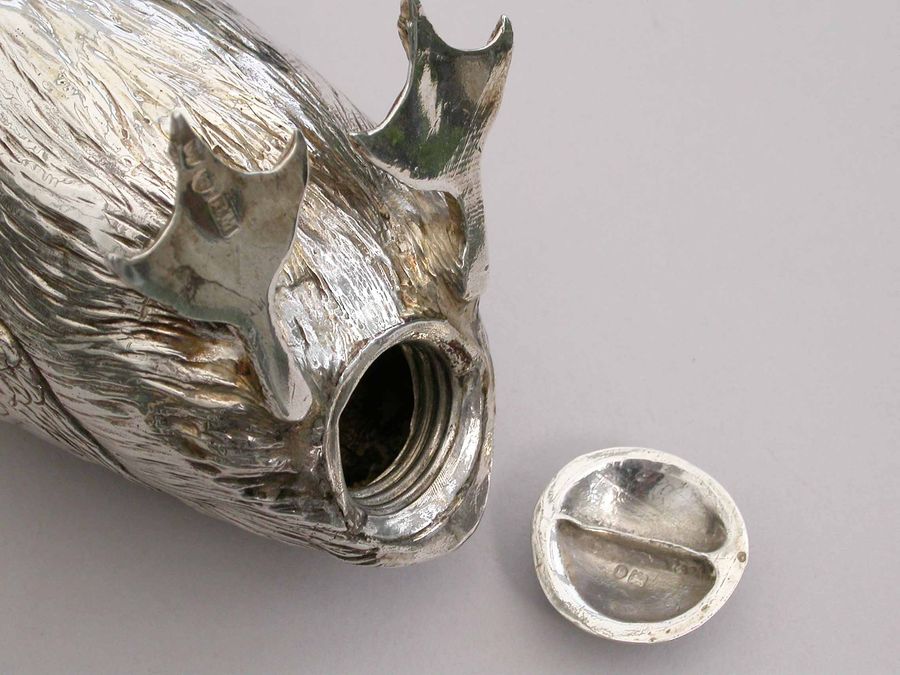
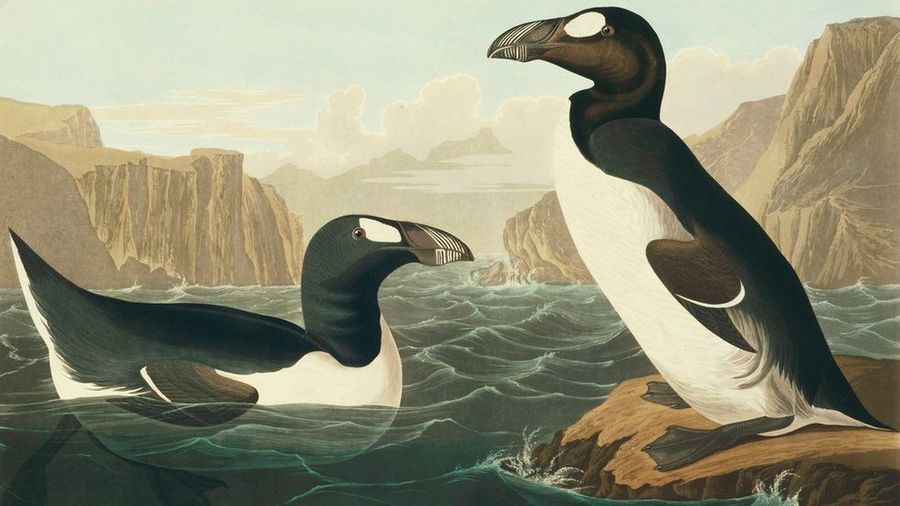
A large early 20th century German Novelty silver Pepper, made in the form of a Great Auk, realistically chased and with screw-off base and pierced head.
London import marks for Berthold Muller 1903.
The great auk (Pinguinus impennis) is a species of flightless alcid that became extinct in the mid-19th century. It was the only modern species in the genus Pinguinus. It is not closely related to the birds now known as penguins, which were discovered later by Europeans and so named by sailors because of their physical resemblance to the great auk.
It bred on rocky, remote islands with easy access to the ocean and a plentiful food supply, a rarity in nature that provided only a few breeding sites for the great auks. When not breeding, they spent their time foraging in the waters of the North Atlantic, ranging as far south as northern Spain and along the coastlines of Canada, Greenland, Iceland, the Faroe Islands, Norway, Ireland, and Great Britain.
The great auk was 75 to 85 centimetres (30 to 33 inches) tall and weighed about 5 kilograms (11 pounds), making it the largest alcid to survive into the modern era, and the second-largest member of the alcid family overall (the prehistoric Miomancalla was larger). It had a black back and a white belly. The black beak was heavy and hooked, with grooves on its surface. During summer, great auk plumage showed a white patch over each eye. During winter, the great auk lost these patches, instead developing a white band stretching between the eyes. The wings were only 15 cm (6 in) long, rendering the bird flightless. Instead, the great auk was a powerful swimmer, a trait that it used in hunting. Its favourite prey were fish, including Atlantic menhaden and capelin, and crustaceans. Although agile in the water, it was clumsy on land. Great auk pairs mated for life. They nested in extremely dense and social colonies, laying one egg on bare rock. The egg was white with variable brown marbling. Both parents participated in the incubation of the egg for around 6 weeks before the young hatched. The young left the nest site after 2–3 weeks, although the parents continued to care for it.
Sold - £995.00



